
The Hominids of Hiberia: Neanderthals, Dolmens and Myths Entwined
At the southwestern tip of Eurasia, the geological cul-de-sac known as the Iberian Peninsula resides. With the majestic Pyrenees Mountains to the north, and the Pillars of Herakles at the Strait of Gibraltar to the south, this peninsula contains a piece of France and all of both Spain and Portugal. It also contains one of the highest concentrations of hominid sites on the planet. These are mostly Neanderthal sites dating back over 10,000 years.
Clustered in almost perfect correlation to these sites is another ancient concentration - a trove of dolmens. These hominid sites and enigmatic megaliths are wellsprings of both scientific enlightenment and mythological beauty, emanating data and lore respectively. Perhaps by reconciling these seemingly opposed paradigms, fresh clues to human origins can be discovered, piercing through the dense fog of cultural biases and taboos that cloud understanding.

Le Moustier Neanderthals by Charles R. Knight. (Public domain)
The Axlor Site: Questioning the Primitive Nature of Neanderthals
Sprinkled all over the cave systems of the peninsula, scientists are uncovering early man sites which, over the past two decades, have yielded revolutionary data. Axlor is a Neanderthal site within the community of Dima, Biscay, a village of the Autonomous Basque region. The site dates back over 40,000 years and was instrumental in shifting the view when it comes to the primitive nature of Neanderthals.
The hominid occupation in this area was so intense for so long, that ancient remains have enabled scientists to construct sophisticated timelines and usage patterns, and what they found changed their perception of the entire human subspecies. They were able, for example, to determine that these Neanderthals successfully executed long-range hunting strategies over time, which enabled them to combat the radical climatic and environmental shifts that they endured.
- The ‘Last Neanderthal Necklace’ Has Been Found In Spain
- All About Neanderthals – The Surprising Facts
All of this research flew in the face of decades of assumptions that regarded the Neanderthal as dumb brutes with limited cognitive abilities. Basically, these Neanderthals practiced resource management and did so with great success for thousands of years. Beyond that, the game they hunted were extremely dangerous and difficult to kill, which further indicates complex, coordinated strategies for survival.
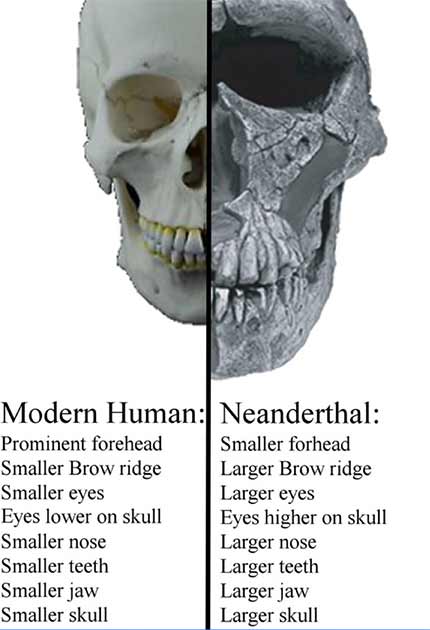
Human and Neanderthal skull comparison. (Author provided)
Cova Forada: Curious Neanderthal Remains and Artifacts
Cova Forada is another noteworthy cave and Neanderthal site which is located within the Spanish province of Valencia, near the Mediterranean coast. This site has yielded three major discoveries and is also exceptional due to the extreme ancient dates which go far back into the Middle Paleolithic (over 100,000 years ago). One of the most complete Neanderthal skeletons ever unearthed came from this site, with many bones still connected to the spinal column which is extremely rare and scientifically valuable.
Just recently, the Cova Forada cave gave up yet another clue, in the form of a very ancient necklace. The necklace is almost exclusively made of eagle claws, which were not much of a food source for these Neanderthals. This points to some degree of symbolic significance, much like the numerous nations today that use the eagle as a symbol of supreme power.
Cova Negra: Insights into Neanderthal Hunting
Also located inside the province of Valencia, near the village of Xativa, is another Neanderthal cave known as Cova Negra. This site is also incredibly old with sporadic occupation dating back to the Middle Paleolithic. This site is unique due to the great quantities of fast and small game animals that were processed and consumed here, especially birds.
Neanderthals typically hunted big game, in fact, some of the biggest most dangerous game imaginable. But here, and in a few other caves nearby, they stalked, killed, butchered, and ate, eighteen different species of birds, most common were doves and crows. Another interesting note on Cova Negra is that of the seven different Neanderthals found in the cave, six were children and one was an adolescent.
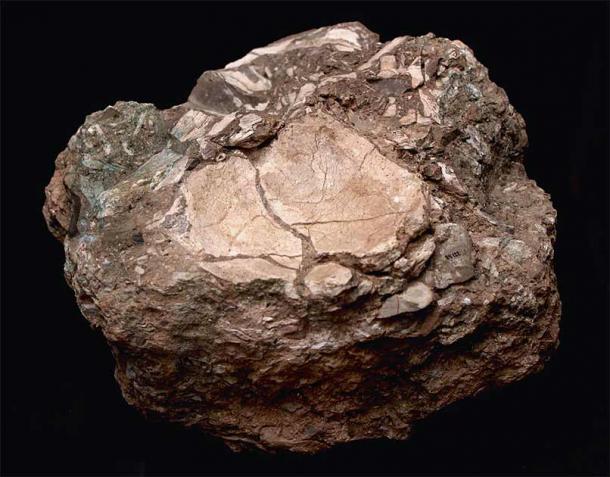
Neanderthal remains discovered at the Bolomor Cave in Valencia. (Falconaumanni / CC BY-SA 3.0)
Bolomor Cave: Advanced Technology and Elephant Remains
Bolomor Cave near Tavernes de la Valldigna, is another Valencian site at which very ancient, hominid remains have been discovered with significant implications. The remains of four different Neanderthal individuals were found, but the remarkable aspect of this site is that sections of it date back 350,000 years and there are tool construction distinctions that stick out as well. The common knapping method (a technique of chipping away edges of a stone until the core emerges intact) was not used much and this leads to the suggestion that perhaps this marked some degree of technological transition.
There are also very many hearths that are being investigated, some of which are lined with stone and date back as far as 250,000 years. Maybe the most baffling find discovered at Bolomor Cave was that throughout the entirety of the occupation, young elephants were hunted and eaten. What is hard to imagine, is that these elephant carcasses (along with many heavy ungulates) were hauled up to the cave by hand.
Keep in mind that the Bolomor Cave isn’t easy to access carrying nothing at all. It is a very steep slope 100 meters (330 ft) up a cliff face. Even though these Neanderthals were estimated to be six times stronger than Homo sapiens, it still requires Herculean effort to carry a deceased young elephant up to this cave.
Sidron Cave: Evidence of Cannibalism and Neanderthal Genetics
The remains at Sidron Cave in the Pilona municipality of Asturias, northwestern Spain, were found unexpectedly in 1994. Around 13 Neanderthal remains were found alongside 53 stone tools and a wonderous gallery of petroglyphs. There are very few non-hominid bones in the enormous cave system, and all of them were deliberately piled into a small chamber.
Upon closer examination and thorough analysis of the bones, a grisly reality came to light. The bones clearly displayed unmistakable evidence of cannibalism. The forensic anthropologists identified “the presence of cut marks, flakes, percussion pitting, conchoidal scars, and adhering flakes.”
Of all the fruits of knowledge plucked from this tree, maybe the most intriguing are the genetic anomalies and revelations. For starters, the FOXP2 gene was discovered, and it is this genetic marker that geneticists identify with language in modern humans. This is a direct implication that the Neanderthals had speech and therefore, elaborate communication, which again, refutes prior assumptions about the primitive capabilities of hominids. But the royal gemstone, so to speak, is the first ever complete sequencing of the Neanderthal Y chromosome.
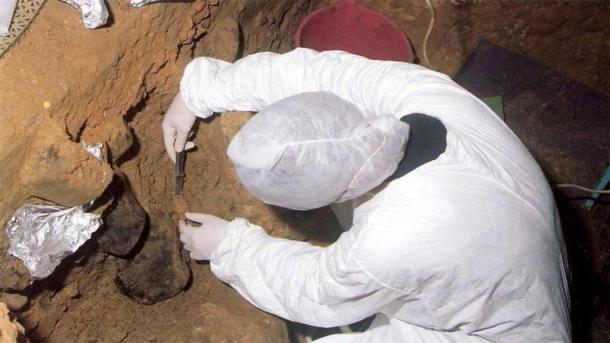
Neanderthal DNA was retrieved from sediments in El Sidrón cave, in northern Spain. (Max Planck Society)
The Sidron Cave Archaeogenetic Anomalies
This successful sequencing of the Neanderthal Y chromosome from the Sidron Cave raised more questions than answers. Allegedly, based on the precarious interpretation of this single specimen, scientists proclaimed that it indicates Neanderthals diverged from a common, human ancestor 590,000 years ago. But a yellow flag of interpretive caution needs to go up here because of several additional anomalies.
It’s important to note that the Y chromosome is passed down exclusively by the father. No other hominid or hominin has ever yielded this chromosome to date. This Y chromosome has never been identified in modern humans and is encoded with a variety of MiHA (minor histocompatibility antigens) that diverge from those of modern humans.
What exactly this all means goes far beyond the scope of this article, but suffice it to say, it is rather strange and does not add up with current preconceptions regarding Neanderthals, their alleged African origins, or their relationship with Homo sapiens.
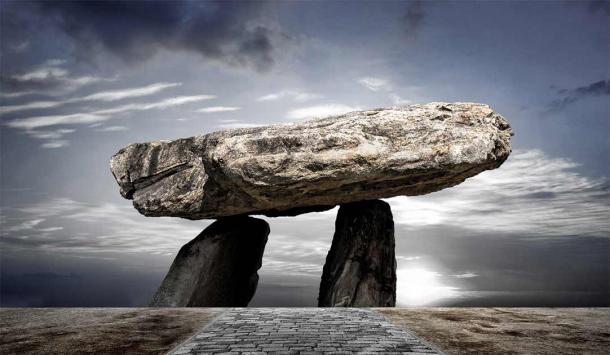
The Kangwha Dolmen in Ganghwa-gun, South Korea. (photo_HYANG / Adobe Stock)
Defining Dolmens
What is a dolmen? A dolmen (also known as a cromlech) is an ancient, megalithic structure normally composed of two or more huge vertical stones which support a single, very huge, often flat stone. In some cases, additional smaller stones or mounds of earth cover the entire structure which is then classified as a tumulus. The conventional definition asserts that most date from the Early Neolithic Period: 3,000 to 4,000 BC, and that entombment was the original function that they served.
However, the reality is that these structures are a great archaeological mystery. There are very few if any peer reviewed, scholarly reports of dolmen excavation that have yielded definitive evidence as to who built these structures, how, when, and for what purpose. Compounding the mystery is the fact that they exist all over the planet, with the highest concentration being in Korea which contains the unbelievable quantity of over 30,000 structures. Western Europe (France, Spain, and the UK) and then the Levant are distant runners up to the Korean concentration of dolmens, which may itself provide a clue.
The Hominid Dolmen Concentration Correlation
The silver medal for dolmen concentration goes to France, and to be more specific southwestern France which leads into the Iberian Peninsula. This region of France is gold metal winner for another contest, and that would be the highest concentration of Neanderthal sites on the planet.
This correlation continues into the Iberian Peninsula where the greatest concentrations of Neanderthal sites are in the Pyrenees. This is just a stone’s throw from the dense concentration of dolmens in southern France and the southwest coast of Portugal, which likewise, is in snug proximity to the dense concentration of previously mentioned trove of Iberian dolmens.
Could it be that the Neanderthals, who possessed strength enough to carry young elephants up a cliff, also had strength enough to erect these giant structures? Cue the tar, feathers, boiling oil, and angry mob of anthropological conformists, but despite their vitriol, the simple fact remains that stone cannot be carbon dated (in reference to the seeming temporal distance between Neanderthals and dolmens), and furthermore, there is no direct, published, archaeological evidence that identifies the builders of these structures.
Also, the perception of Neanderthals is shifting rapidly towards greater capabilities and recentness of existence, which is in stark contrast to all of the original hominid dogma that still persists in the minds of the public. But then again, that may be the entire point. In other words, it could be that there have been excavations conducted, reports generated, plus remains and artifacts exhumed that the public is not aware of. Certainly, there are many peculiar reports from the United States (late 19th and early 20th century) revolving around burial mound excavation and the unique physical traits of the skeletons (which now cannot be located).
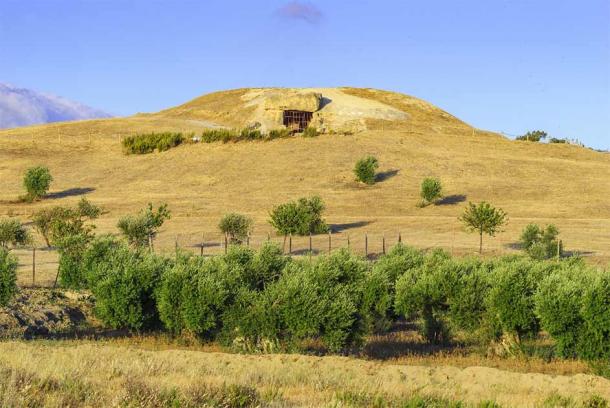
The Dolmen of Menga in Antequera, Spain. (Jesnofer / Adobe Stock)
The Dolmens of Antequera
There are hundreds of dolmens bejeweling the Iberian Peninsula, but several stand out due to their astronomical/geographical orientations, their incredible proportions, and their potential links to the Paleolithic Era. The Dolmen of Menga, in southern Spain near Antequera, represents one of the most significant masterpieces of megalithic construction based on its post-and-lintel structure with an earthen covering.
This particular dolmen is notable for its enormous dimensions that push the size possible in a corridor sepulcher by utilizing the unprecedented solution of intermediate pillars. Additionally, Tholos of El Romeral (different dolmens at the same site) complements the two dolmens with its corridor and false dome of drystone masonry.
Both the Dolmen of Menga and the Tholos of El Romeral have anomalous orientations. The archaeoastronomer Michael Hoskin, who analyzed the site, noted that the Dolmen of Menga aligns towards the close peak known as the Peña de los Enamorados (interestingly, this mountain is also known as Montaña del Indio because it resembles the head of a Native American). This strange, lonesome mountain rises abruptly from the plain and contains the contemporaneous rock shelter of Matacabras, in which cave paintings are found.
A similar orientation exists regarding the dolmen Tholos of El Romeral, which is oriented to the mountains of El Torcal, which likewise contains the Cave of the Bull (another rock art and early man site) and is also aligned towards the noon sun on the winter solstice. El Torcal is remarkable for the extensive, otherworldly karst landscape at its summit.
On top of all this, the Tholos of El Romeral dolmen is positioned along an axis from the Dolmen of Menga to the Peña de los Enamorados. Therefore, the Dolmens of Antequera constitute a genius, stylized, and artificial landscape in an intertwined, symbiotic relationship with the surrounding natural formations and the stars.
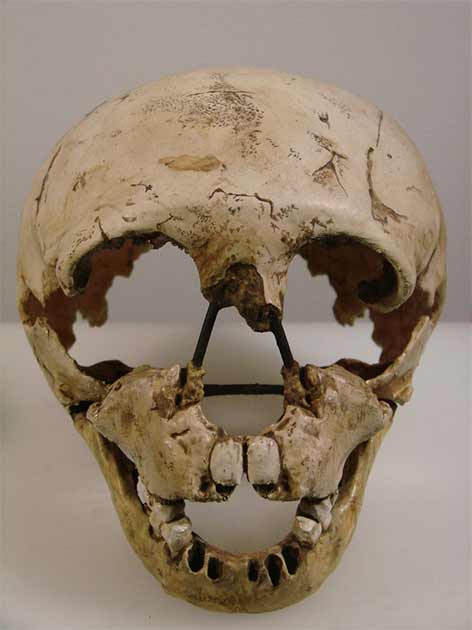
The Gibraltar 2 Neanderthal skull was discovered at the Devil's Tower Mousterian rock shelter. (Guérin Nicolas / CC BY-SA 3.0)
The Devil’s Tower
At the southernmost tip of the peninsula, at the edge of the Strait of Gibraltar, rests the ruins of the Devil’s Tower. The name refers to an ancient stone watchtower, which was suspiciously destroyed in a deliberate act around 1940, allegedly because the tower was obstructing the line of fire for surface to air guns of WWII. This was ordered by General Sir Noel Mason-Macfarlane as Gibraltar was then, and is now, technically, a British Overseas Territory.
Digressing for a moment, it should be noted that such ancient watchtowers, with identical dry masonry construction, exist at other anomalous megalithic sites around the globe, like Kulap in Peru, Malta and Sardinia in the Mediterranean, plus in the Four Corners Region of the southwestern United States. Also during the war, the British Military deliberately tampered with archaeological sites on Malta, and Malta Heritage claims it was at this point they somehow “lost” tens of thousands of enigmatic human remains from the subterranean chambers beneath the island.
- Who Were the Ancient People that Built the Remarkable Megalithic Tombs of Malaga?
- Young Neanderthal Footprint Found in Gibraltar is Only the Second Example in the World
Back to the Iberian site, in extreme close proximity to this ancient watchtower is a Paleolithic rock shelter within which a Neanderthal skull was discovered in 1926 by archaeologist Dorothy Garrod. This was the second such Neanderthal skull discovered in Gibraltar, was near a cache of stone tools, and is now known as Gibraltar Two or the Devil’s Tower Child.
British authorities adamantly claim that the tower and the Paleolithic site were/are unrelated, which is convenient for their narrative seeing that they intentionally destroyed the tower. Keep in mind that it could not possibly have been an obstruction for a mobile gun turret.
The “Myth” of the Jentilak
The Jentilak (plural form of Jentil) were, according to Basque mythology of the Pyrenees region, a vanished race of hairy giants who were responsible for the erection of dolmens. The tradition holds that the Jentilak coexisted with the Basque people and even taught them the arts of metallurgy and agriculture.
While the Homo sapiens Basque people lived in the river valleys and on the coast, the (archaic) Jentilak lived high in the mountains in caves. Although they were said to have coexisted peacefully to some extent, they were also generally regarded as hostile, unruly, and dangerous.
They were said to have tremendous physical strength, able to throw boulders from one mountain to the next and had competitions of stone throwing which are carried on to this day by modern Basque people. The tradition concludes that the Jentilak, unwilling to progress or coexist any longer, retreated, through the dolmens, into the subterranean realm.
It absolutely could be that the so-called myth of the Jentilak, the high concentration of dolmens, and the dense clusters of Neanderthal sites, are all remnants and memories of the same Paleolithic culture. How can it be that there is so little archaeology to speak of regarding these structures that exist all over the planet? And, why were ancient humans so universally compelled to build these structures in the first place?
Top image: The Dolmens of Antequera, remnants of prehistoric Iberia. Source: goyoconde / Adobe Stock
By Mark A. Carpenter
References
Garrod, D. A. E. et. al. 1928. "Excavation of a Mousterian Rock-shelter at Devil's Tower, Gibraltar" in Journal of the Royal Anthropological Institute. Royal Anthropological Institute of Great Britain and Ireland.
Hoskin, M. 15 July 2016. "The Dolmens of Antequera" in Diario Sur. Available at: https://www.diariosur.es/culturas/201607/15/dolmenes-antequera-20160714235859.html
Jensen Jr., J. 2015. Earth Epochs: Cataclysms across the Holocene.
Lalueza-Fox, C. et. al. 2012. "Palaeogenetic research at the El Sidrón Neanderthal site" in Annals of Anatomy - Anatomischer Anzeiger. 194 (1): 133–137.
Lewis, S. 2009. Guide to the Menhirs and other Megaliths of Central Brittany. Nezert Books.
Locker, M. 19 September 2018. “The Mythology of Giants in the Pyrenees” in Perennial Pyrenees. Available at: https://perennialpyrenees.com/2018/09/19/article-25-the-mythology-of-giants-in-the-pyrenees/
Roach, J. 13 September 2006. “Neandertals' Last Stand Was in Gibraltar, Study Suggests” in National Geographic News. National Geographic Society.
















Comments
Fascinating. The myth of the Jentilak is strikingly similar to some traditional stories of the Nenets and Komi nations of western Siberia. They speak of a vanished race of short, stocky people that inhabited the land before present day humans. They had a light complexion and gray eyes, lived in caves, were afraid of sunlight so they went hunting at night. Later they met humans and intermarried with them, in some stories they taught them how to make a fire. Then one day, the ground opened up and swallowed the ancient people. In the realm of folk tales, they still live under the ground and forge bronze and iron objects that sometimes show up on the surface. I’m a writer and have studied ethnography so I’ve done a study on these legends and similar oral stories, pondering whether they could hold fragmented memories of Neanderthal-Homo Sapiens encounters mixed up with memories of much later (eg, Bronze Age) nations. My study is available on Amazon as a Kindle book. Feel free to look into it or read it, I’d love to hear various opinions about it: https://www.amazon.com/dp/B0B9NYXGYF/ref=sr_1_1?crid=VUJTE5ZPWD30&keywor...
Big Foot and its various counterparts could be Neanderthal?